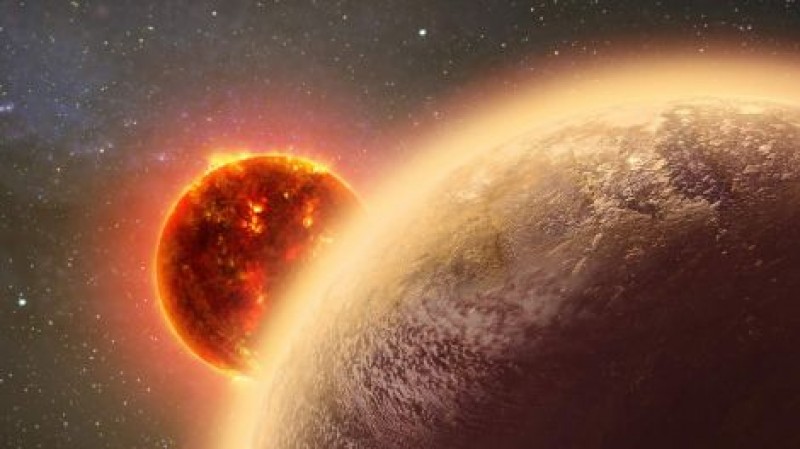
A giant planet has been found orbiting an ultracool dwarf star — the largest planet compared to its star ever found — leaving scientists baffled at how the duo could have formed.
The planet NGTS-1b is situated 600 light-years from our solar system, according to a statement from the University of Warwick, and it is a gas giant about the size of Jupiter. Its star, on the other hand, is just half the mass and radius of the sun. The planet orbits its star at 3 percent the distance from the Earth to the sun, and it whips around a full orbit every 2.6 Earth days.
An international collaboration of researchers found the planet using the Next-Generation Transit Survey, an array of 12 telescopes at the Paranal Observatory in northern Chile that searches for a telltale dimming in distant stars that would indicate planets passing by. [7 Ways to Discover Alien Planets]
"The discovery of NGTS-1b was a complete surprise to us — such massive planets were not thought to exist around such small stars," Daniel Bayliss, lead author on the new work and a researcher at University of Warwick in the United Kingdom, said in the statement. "This is the first exoplanet we have found with our new NGTS facility, and we are already challenging the received wisdom of how planets form."
The system's star is a small, dim M-dwarf, which is the most common type of star in the sky. Red dwarfs burn their fuel much more slowly than sun-like stars, so they can have lifetimes of trillions of years. According to the new work, this is the third time a gas giant has been seen orbiting an M-dwarf — but this planet is by far the largest.
While it can be tricky enough just to spot planets orbiting M-dwarfs, researchers are much more used to seeing M-dwarfs orbited by rocky planets, according to a statement from the Royal Astronomical Society. In February, for instance, researchers found seven rocky planets orbiting the small, dim TRAPPIST-1. NGTS-1 is larger than TRAPPIST-1, but researchers are still unsure how the star could have gathered enough material to build a large gas giant during the system's formation, they said in the statement.
To find NGTS-1b, the Next-Generation Transit Survey monitored certain spots in the sky for months with red-sensitive cameras to catch any changes in brightness to stars in its field of view, according to the statement from the University of Warwick. Researchers saw the particular M-dwarf dipping in brightness every 2.6 days, suggesting it had a planetary companion. Then, they confirmed the planet's gargantuan size by measuring its radial velocity — how much the star "wobbles" during each orbit from its companion's gravitational pull.
"NGTS-1b was difficult to find, despite being a monster of a planet, because its parent star is small and faint," Bayliss said. "Small stars are actually the most common in the universe, so it is possible that there are many of these giant planets waiting to be found."
"Our challenge is to now find out how common these types of planets are in the galaxy, and with the new NGTS facility, we are well-placed to do just that," he added.
Source: Sarah Lewin Space.com Associate